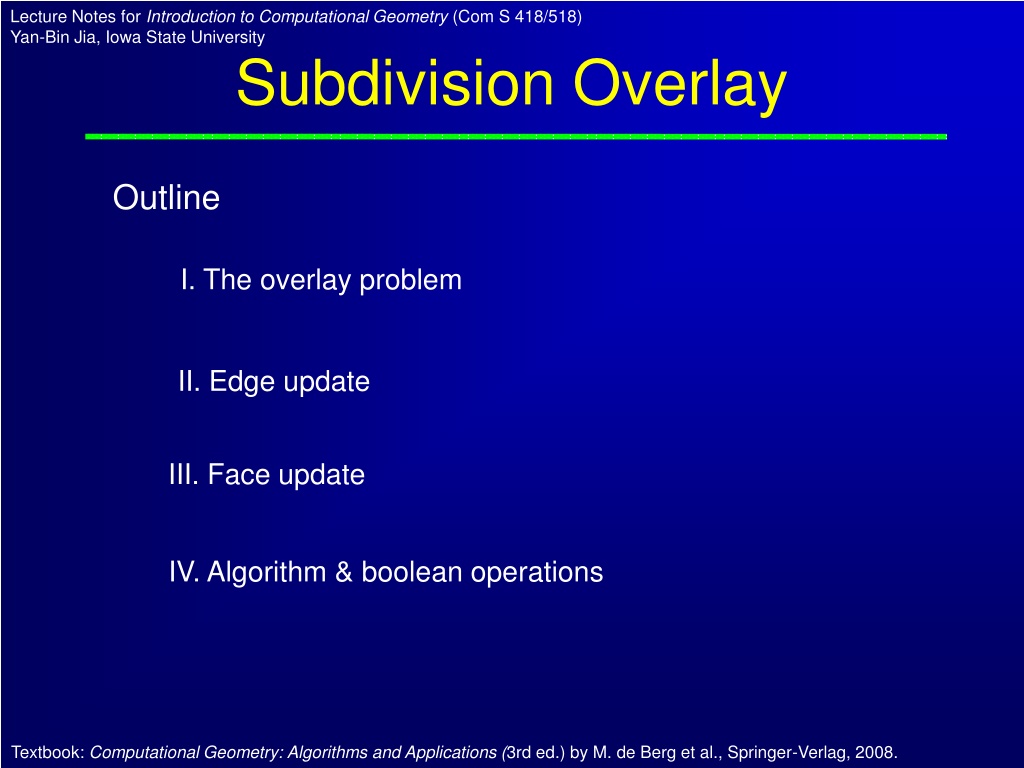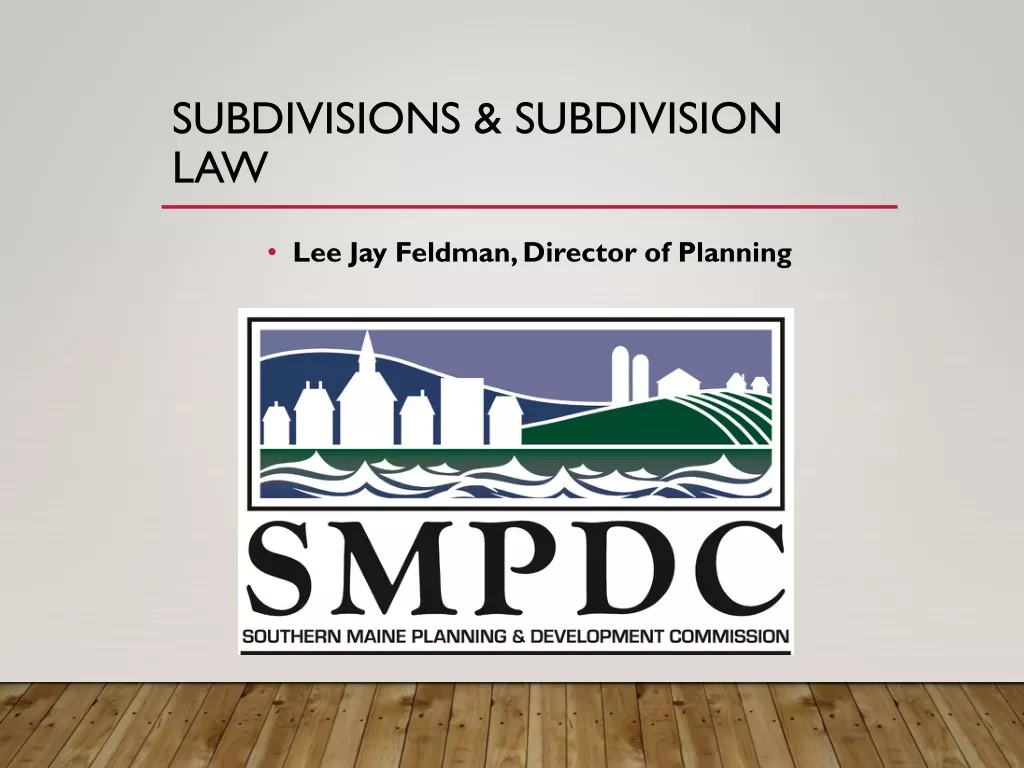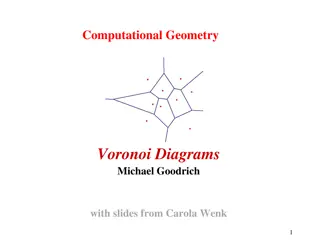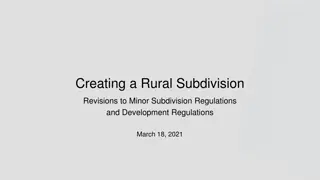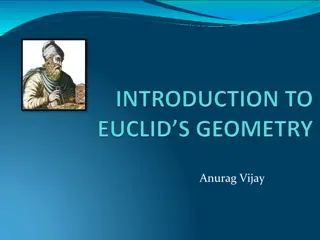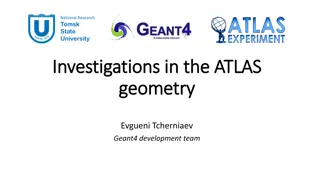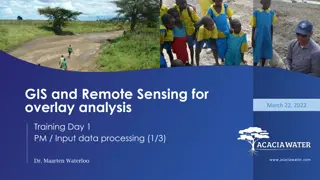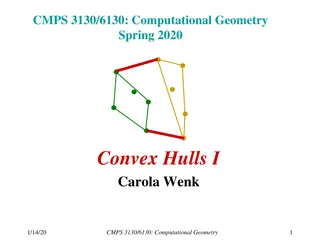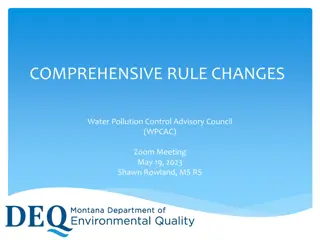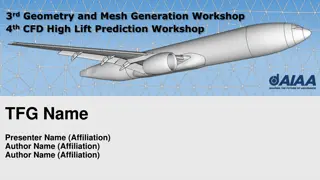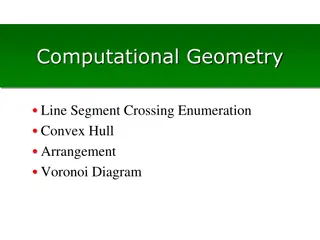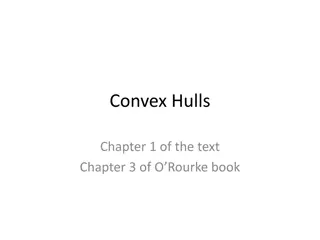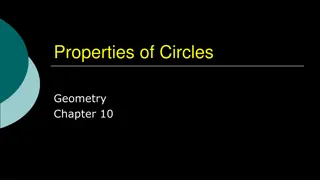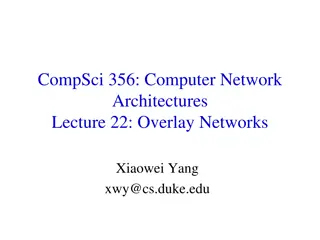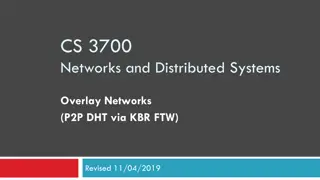Overview of Subdivision Overlay in Computational Geometry
Introduction to the overlay problem in computational geometry, focusing on computing a doubly-connected edge list for a new planar subdivision by handling various edge crossings and updates efficiently using a general approach involving DCEL manipulation and intersection computations.
Download Presentation

Please find below an Image/Link to download the presentation.
The content on the website is provided AS IS for your information and personal use only. It may not be sold, licensed, or shared on other websites without obtaining consent from the author.If you encounter any issues during the download, it is possible that the publisher has removed the file from their server.
You are allowed to download the files provided on this website for personal or commercial use, subject to the condition that they are used lawfully. All files are the property of their respective owners.
The content on the website is provided AS IS for your information and personal use only. It may not be sold, licensed, or shared on other websites without obtaining consent from the author.
E N D
Presentation Transcript
Lecture Notes for Introduction to Computational Geometry (Com S 418/518) Yan-Bin Jia, Iowa State University Subdivision Overlay Outline I. The overlay problem II. Edge update III. Face update IV. Algorithm & boolean operations Textbook: Computational Geometry: Algorithms and Applications (3rd ed.) by M. de Berg et al., Springer-Verlag, 2008.
I. Overlay of Two Subdivisions 2 S (DCEL2) 1 S doubly-connected edge list 1 (DCEL1) The overlay is a new planar subdivision.
The Overlay Problem Compute a doubly-connected edge list for the new planar subdivision. Every face is labeled with the labels of the containing faces from the input subdivisions. Half-edge records reusable since the edge is not intersected by those from the other subdivision. new intersection. Half-edge records need to be generated 2 S 1 S
The General Approach First, copy the DCELs of two subdivisions. Transform the result into a valid DCEL for the subdivision overlay. Compute the intersections of edges from different subdivisons. Link together appropriate parts of the two DCELs. 1. Vertex and half-edge records. 2. Face records. Modify the plane sweep algorithm!
Line Sweep new intersection Invariant: the part of overlay to left of the sweep line has been computed correctly. DCEL1 DCEL2 DCEL for the overlay
At an Event Point Update the event queue and sweep-line status tree as in the segment intersection algorithm. In case the event point is Vertex adjacent to edges from one subdivision. No additional work! Intersection of edges from different subdivisions. Link the DCEL1 and DCEL2 at the intersection point. Handle all possible cases.
II. Three Types of Edge Crossing Vertex-Vertex: two vertices from different subdivisions coincide with each other. Vertex-Edge: an edge from one input subdivision passes through a vertex of another subdivision. The other two cases are no more difficult. Edge-Edge: two edges from different subdivisions intersect in their interior.
Vertex-Edge Update An edge of one subdivision passes through a vertex of another subdivision. DCEL1 Before: 2 old half-edges DCEL2 After: 4 new half-edges
Operations in the Update ae ?? 2. Shorten half-edge ??= (?,?) to ?? = (?,?). be 3. Shorten half-edge ??= (?,?) to ?? = (?,?) .
Operations in the Update (contd) Next(??) 5. Each of the four new half-edges requires four pointer updates: ? Prev(??) its own Next and Prev pointers; the Next pointer of its predecessor; the Prev pointer of its successor. // pointer inheritances Prev(??) Next ?? Next ?? Prev Next ?? Prev Next ?? Next ?? Next ?? Prev ?? Prev ?? Next(??) " Prev ?? Next Prev ?? Next Prev ?? " Prev ?? ?? ?? ?? ?? " " // extra effort ,Prev ?? "? Prev ?? Next ?? "? ,Next ?? Prev Next ?? Prev Next ?? Next Prev ?? ?? ?? " " ?? " " Next Prev ?? ??
Previous and Next Edges DCEL1 DCEL2 How to find it using the DCEL2? Scan outgoing edges from ?in cyclic order.
Time Cost for Updating Vertex and Half- Edge Records Generalizes over the vertex-vertex and edge-edge cases. Updating vertex and half-edge records does not increase the asymptotic running time of the line segment intersection algorithm. every intersection is a vertex of the overlay. combined complexity of 2 input subdivisions complexity of the overlay
III. Face Update #face records = 1 + #outer boundary cycles Easy to extract all boundary cycles from DCEL.
Outer Boundary Cycle How to distinguish an outer boundary cycle from one that bounds a hole? ? Compute ?? Use cross product: ? Next(?)
Cycles Bounding the Same Face (a) one of the corresponding cycles is the boundary of a hole. (b) the other cycle has a half-edge immediately below the lowest vertex of the first cycle.
Graph Example C3 C4 Five faces in total. C1 C2 C6 C7 C5 C6 C3 C Inner boundary C5 C7 C1 C C4 C2 Graph ? induces the record for every face in DCEL (?(? + ?)time). Outer boundary
Construction of Graph G The algorithm checks the segment immediately below the event point. Make a node for every cycle.
Labeling a Face Every face in the overlay is labeled with the names of the faces in the old subdivisions that contain the face. intersection of edges from different subdivisions. Look up the IncidentFace( ) pointer of the two corresponding half-edges. ? existing vertex of one subdivision. Know only one generating face the one from the same subdivision. Therefore, for each vertex in one subdivision, we keep track of its containing face in the other subdivision. Plane sweep again (or do it in the same sweep).
Boolean Operations Operations on polygonal regions: ? or ? faces labeled (P, C ) ? but not ?
